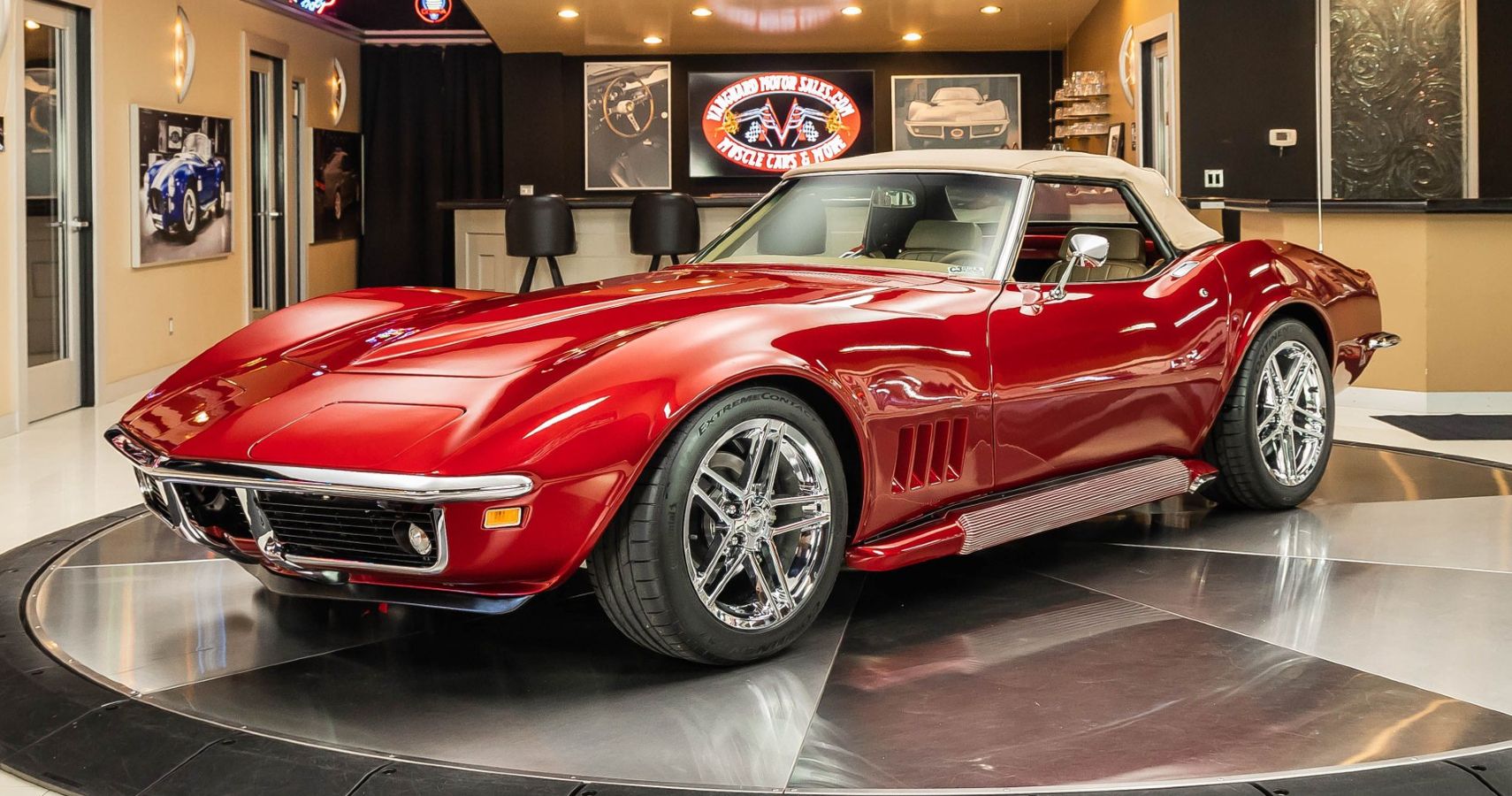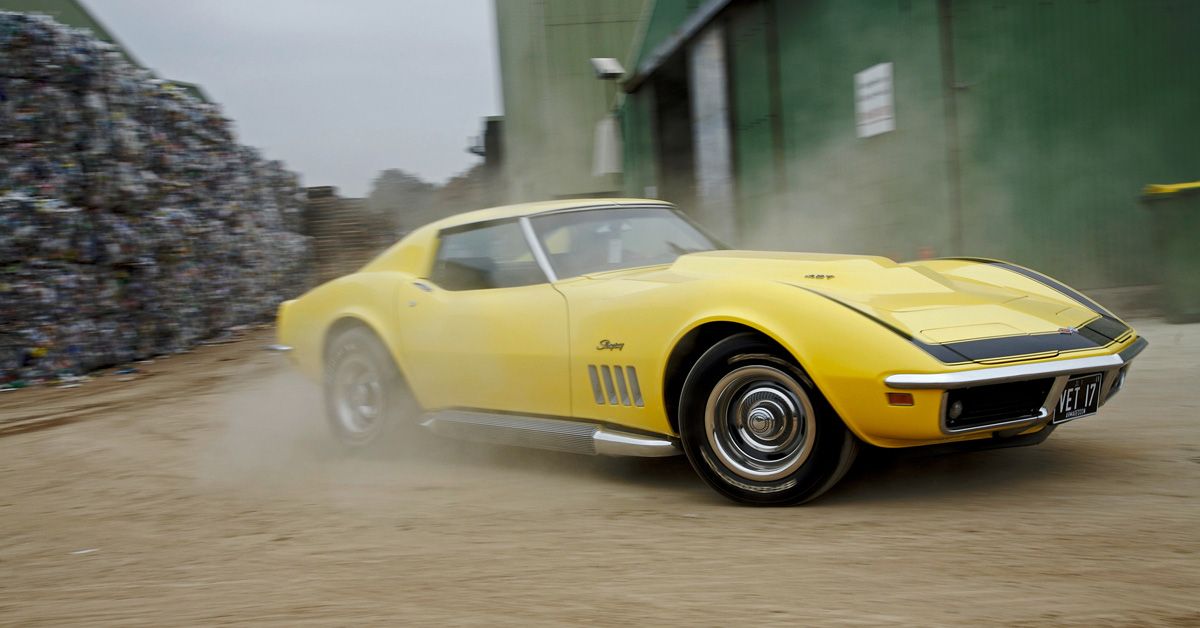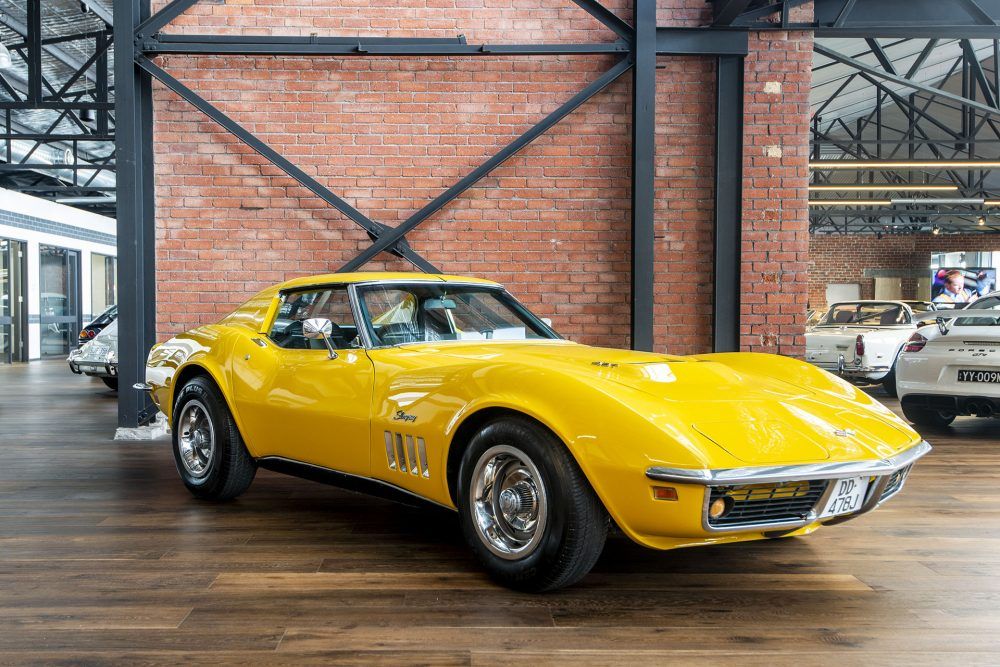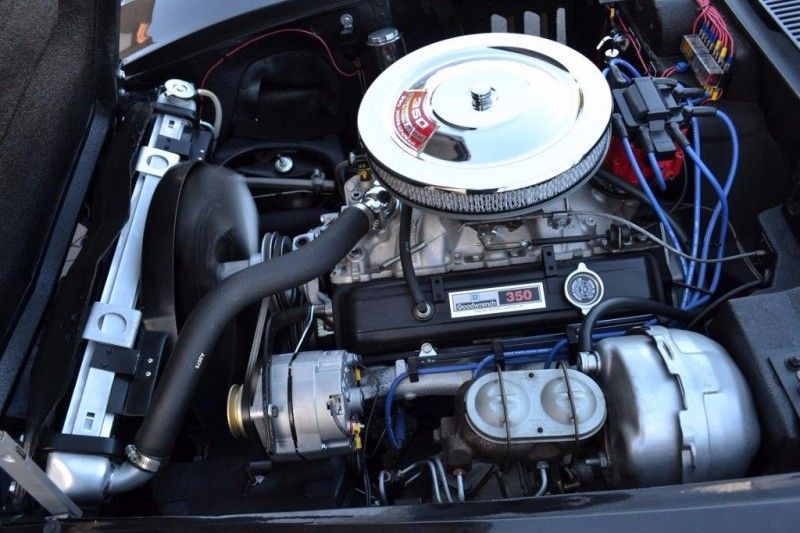Today, the 1969 Chevrolet Corvette is a rather rare sighting. The 1969 Corvette was a darling in its time, the face of teenage rebellion, raw power, and passionate design. Designated the fitting name ‘Stingray’, this piece of classic muscle has changed a lot over its odyssey throughout the years, but not necessarily for the better. The 1969 Corvette was part of the "C3" generation (1968-1982) in the evolution of the iconic Corvette Stingray. That C3 generation brought a slick new design that introduced the T-top feature and overall proved immensely popular, as evidenced by its very long run.
Updated June 2022: This article has been updated to reflect the current market costs of the highly sought after American classic from the 1960s. The classic car market is ever evolving, and today the 1969 Chevy Corvette can fetch some big bucks.
For starters, the '69 Corvette was a ground-up redesign of the body and the interior from the C2 generation. It featured new aerodynamic lines and a base 350 c.i. 300-hp V8 engine with four other power options going all the way up to a 427 c.i. monster with 435 hp.
With just a little shy of 39,000 models built for the masses, the base model will set you back at least $30,000, and that's a steal.
An Unmistakable Chevrolet Design
Few cars own a truly distinctive look, and even fewer can lay claim to as tasteful a design as the folks at Chevrolet delivered with the Stingray line of Corvettes in 1969. Every 1969 Vette was designed and engineered with aerodynamics in mind. The headlights hid away in a concealed design through a mechanism operated via a vacuum system. The windshield wipers were also hidden to provide a tasteful design when the vehicle was gazed upon from the front.
Stepping up from the previous generation’s coupe and convertible designs, the 69 Vette coupe featured a flying buttress style roof with a near-perpendicular rear window and T-tops. For the convertible model, a soft folding top was used. The 69 Corvette was fitted with ‘Stingray’ front fender nameplates, a concept which was carried forward in its descendants.
Let's Dig Up Some '69 Corvette Features
The original 69 Corvette was retailing for $4,780 at its unveiling. This price tag brought a fully-featured base model, whose front fenders had engine cooling vents. It also featured Astro Ventilation, which was a fresh air circulation system.
Being a sports car worthy of the name, the model came with a speedometer and a tachometer placed squarely in front of the driver. The 69 Vette had a gauge for everything to do with the engine, arranged on the top end of the console. These would naturally be gauges for oil pressure, water temperature, fuel level, time, and ammeter. In fact, a 1969 sales brochure pointed out that the Corvette had a gauge for everything but your blood pressure!
Lacking a glove box, the model had a console that monitored exterior lighting. The Stingray was also one of the few sports cars back then that offered optional air conditioning, a feature appreciated by those who lived in hotter areas of the country.
The vehicle also featured a rear window defroster for winter weather, in coupe versions. An anti-theft alarm system was available, as was a stereo radio, prompting the distributor to be covered with chrome-plated ignition shielding to reduce interference.
The Stingray featured 8-inch-wide steel wheels, and could optionally come with white lettered tires to replace the last generation of red striped tires. The slimline bucket seats on the 69 Vette were outfitted with color-keyed push button seat belts and inertia action shoulder belts.
Restoring A 1969 Chevrolet Corvette
Owing to the fact that classic GM parts are not as rare as one would deem them to be, restoring a 69 Corvette is well within financial reach. While the original 350 c.i. engine was more commonplace in the days past, nowadays, you are more likely to stumble across the 427 CID engines, which also come in a variety of hp: 300hp, 350hp, 390hp, 400hp, and 435hp.
Interior restoration will be a breeze, with seat upholstery and gauges readily available, as are door panels and wiring systems. In the case of a convertible model, the entire roof may be replaced, together with its trigger mechanism.
Throw in transmission, suspension and brake rebuilds and a set of new tires, and you're good to go. Although nice examples of 350-powered cars can be found for less than $50,000, the price for a 427-powered 69 Corvette will be around $95,000. Ultra-rare and powerful examples command big bucks -- just last year, a 1969 Chevy Corvette L88 snatched up $610,000 at a no reserve auction.




